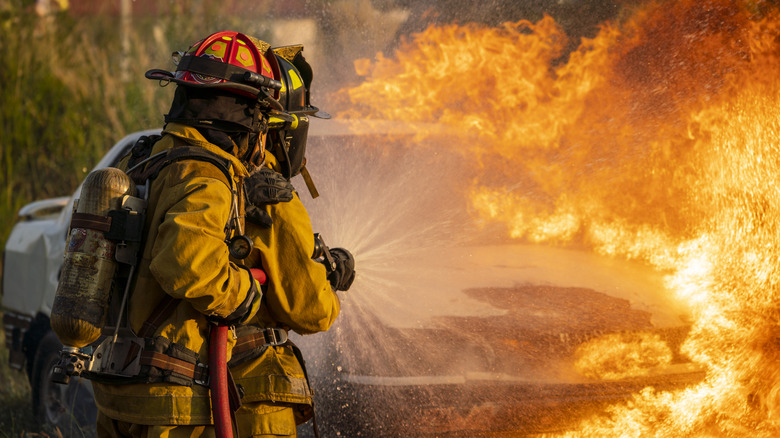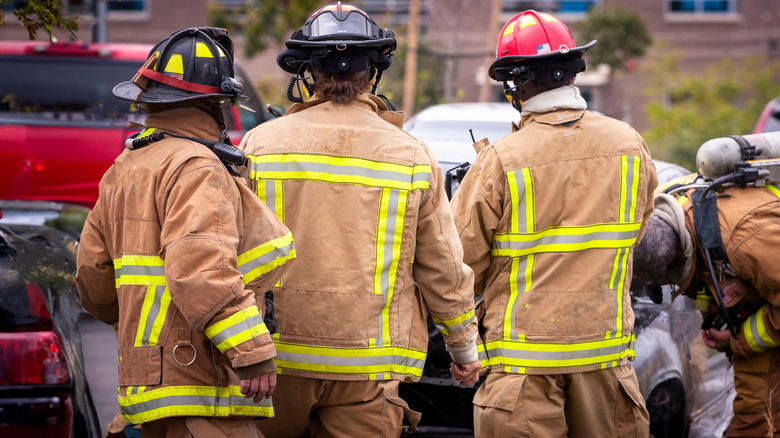Why Do Firefighter Helmets Have A Unique Shape?
Much like how dirt bike helmets are shaped differently, firefighter helmets have always been a unique design, starting with the "stovepipe" helmet from the colonial days. It wasn't until 1836 that something more familiar to today's helmets started taking shape thanks to luggage designer Henry T. Gratacap. The helmet he created was made from treated leather, but it was arguably superior to other protective helmets at the time, according to the Smithsonian. The helmet's design has gradually changed over the years, straying from Gratacap's original idea as new technology and design techniques became available. Some features remain, though, giving the helmet its one of a kind appearance.
The elongated duckbill, as the rear brim has been called, is a mainstay of the helmet and prevents water and other liquids from running down the firefighter's back. In a profession where any liquid could be flammable or toxic, it's best to keep most fluids away. There's a significant search and rescue component to the job, as well, that involves breaking down walls or smashing windows and the crown of the helmet helped with windows. Naturally, the main section of the helmet was designed to deflect falling debris.
An actual standard for firefighter helmets didn't come about until 1979 when organizations started measuring impact resistance, penetration, resistance to electrical current, and heat resistance. Leather eventually took a backseat to plastic but the shape stayed relatively close to its original design. When you're saving lives, everything about your gear needs to favor function and if it isn't broke, don't fix it.
Firefighter gear has routinely upgraded
First there was the stovepipe helmet, which didn't provide much protection for the firefighter to speak of with its rigid leather. Moreover, the gear firefighters wore in the colonial days was made out of heavy wool. Wool pants, shirt, and a heavy wool tunic. The gloves they wore, if they had any, came from home, which were commonly made out of leather like their boots. Leather boots were gradually phased out, though, in favor of rubber, which protect from water significantly better. Rubber is especially useful for modern day firefighters since electricity became commonplace, creating new hazards for firefighters.
Around the same time the helmets were being measured for better protection, the rest of the firefighter's loadout was held to a certain standard, as well. The National Fire Protection Association (NFPA) required firefighters to wear an outer layer of protective gear that could withstand 500 degree Fahrenheit temperatures for five minutes. By the '80s, the NFPA raised that resistance to 1,200 degrees.
New tech for firefighters is launching all the time, such as spherical robots that look for gas leaks and alert systems that help prevent losing one's way in a burning building. They also commonly wear what's known as the Personal Alert Safety System (PASS). It's a motion activated device that sends out a loud alarm if it doesn't detect motion from the wearer after 30 seconds. Even in a smoke-filled room, other firefighters can follow the alarm to find their fallen brother or sister.

